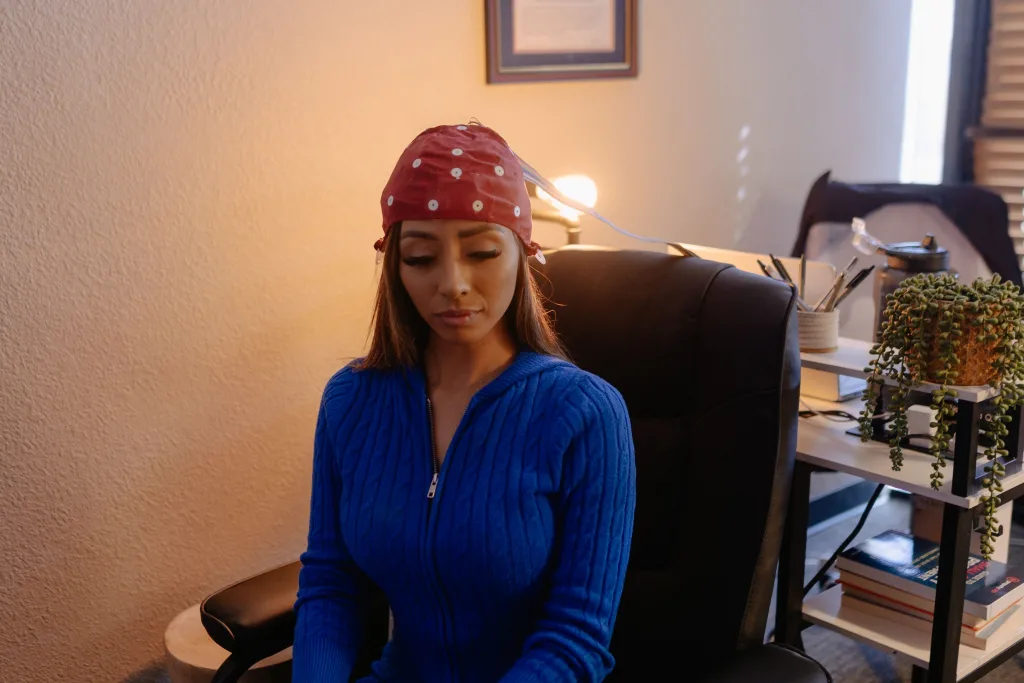- ThinkWell Therapy Center
- Chandler, AZ
- Admin@ThinkWellTherapyCenter.com
- 480.409.0543
Neurofeedback is an advanced, evidence-based approach to improving mental health by teaching your brain to regulate itself for optimal performance. By monitoring your brain’s electrical activity (EEG) in real time, we deliver gentle audio or visual cues that guide your brain toward healthier, more balanced patterns—resulting in real, lasting improvements in mood, focus, and well-being.
Most mental health symptoms—including anxiety, depression, ADHD, trauma, and insomnia—are tied to patterns of brain activity that have become dysregulated or "stuck." Neurofeedback works at the source—your brain’s own regulation system—empowering you to create lasting change, not just temporary relief.
Take the first step toward better brain health. Find out if neurofeedback is right for you risk-free.
Book My Free ConsultationNeurofeedback therapy at ThinkWell has changed our lives! Our daughter (9 years old, autistic and epileptic) has not only had fewer seizures than ever before, her ability to communicate, comprehend and engage with others has improved well beyond our expectations. She is thriving at school, at home and out in the community.
Her negative behaviors kept us isolated for years and because of Neurofeedback and the amazing staff at ThinkWell we have been able to eliminate certain behaviors and drastically reduce others! Our family has finally broken free from simply surviving day to day—we are planning trips and events and looking forward to the future because of the success of Neurofeedback @ ThinkWell!
I am beyond thankful we found ThinkWell and would recommend them to anyone looking for a safe, intentional, therapeutic connection to help themselves or someone they love grow!

Our all-in-one brain wellness packages combine the most advanced modalities in neuroscience and mental health to deliver true results. Every plan is fully personalized for you or your loved one—no one-size-fits-all approaches here.
Our clinical director has 17 years of neurofeedback experience, is trained in multiple neuromodulation modalities, serves as a BCIA mentor, is a licensed mental health professional, and has published research in Journal of Neuroregulation and Frontiers in Neuroscience.
We interpret our own brain maps and develop individualized treatment plans in-house. Unlike providers who outsource qEEG analysis, we can adjust protocols in real time to ensure progress and effectiveness throughout the neurofeedback journey.
Our clinical director trains providers nationwide and mentors a team of BCIA-trained staff. You’ll work with professionals who know how to assess, adjust, and guide every step of your brain training process.
All our neurofeedback staff are BCIA certified or currently in training with multiple years of experience—unlike many techs who lack formal neurofeedback education and oversight.
We use LORETA 3D Neurofeedback, the most advanced and effective tool for training multiple brain areas, tracking progress, and measuring outcomes—features not available in simpler systems.
Every brain is different. Our qEEGs allow us to create personalized treatment plans based on your unique brain map. Unlike one-size-fits-all systems, our approach ensures the most effective, custom results for you or your child.